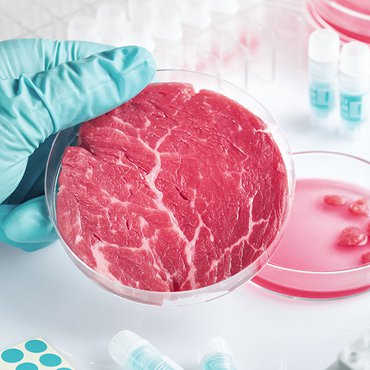The challenges facing the market for meats created in a lab were discussed extensively during last month’s Cultured Meat Symposium in San Francisco.
Lab-created meats, also known as cultured meats or cellular agriculture products, are exactly what they sound like: meats created in a laboratory, using a few cells – calf cells to create beef products, for example.
While this nascent industry is being touted as one of the solutions to help the environment — since raising animals for food takes a huge toll – it faces a mountain of challenges, acknowledged symposium participants.
Regulation
Cultured meats need to be approved as safe to consume by the USDA and the FDA before they can be sold to consumers.
One challenge is what to call these products — should they be known as "meat"? “People are pretty united that if it’s molecularly similar it should be called meat,” said Alex Shirazi, managing partner of the symposium. He expects to see regulation advancement over the next year.
Scalability
The most immediate, and pressing, problem is scaling the facilities where cultured meats are grown. The cells replicate on frameworks, which need to be built, and the cells need to be "fed" with a media that needs to be readily available.
It’s also a challenge to build facilities that are efficient, and able to house growing cells, said Shirazi.
The technology is there to create the meats, he explained; the problem is one of engineering, not science. “We haven’t gotten to a point yet where the technology can scale,” he pointed out.
Customer Acceptance
The cultured meat industry won’t grow if consumers don’t accept these products. In order for that to happen, there needs to be complete transparency, education, and information, symposium participants said.
Partnerships with retailers and chefs could go a long way to building trust. Upside Foods in San Diego, which produces cultured chicken, recently partnered with chef Dominique Crenn for recipes and menu inclusion at her three-Michelin star restaurant, Atelier Crenn, in San Francisco.
“If we’re not completely transparent with what this technology is, it could turn it upside down and create that ick factor,” Shirazi said.
Sustainability
If more consumers eat cultured meat, it will be great news for the environment. Kara Nielsen, director, food and drink with WGSN, a trend forecasting company based in New York City, who spoke at the symposium, thinks seafood will likely be the first to take off in cultured foods because consumers are, overall, more aware of the sustainability problems in this industry.
But any companies interested in creating cultured meats will have to show that their products are better, from a sustainability standpoint, than traditional proteins, and that their facilities are energy-efficient, she said.
Related: The New Meat: Developed By Science, Grown in a Lab; Raley's Sponsors California Food Lab.

